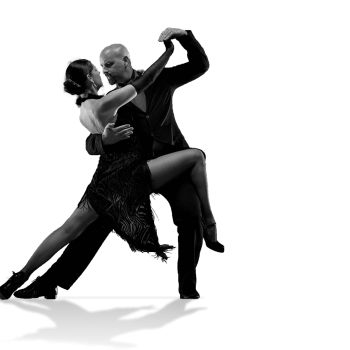Service Areas

STRATEGIC CHOICES
The process of assessing where an organization finds itself, what the future environment is likely to be and the implications of this are central to planning for the future. When combined with an organization’s vision, mission and values of this assessment will lead to the creation or confirmation of a long-term plan with its necessary components of strategic goals, key initiatives, actions, short-term projects, measurable objectives and the like.
At L&C we support organizations through these processes of reflection whether this requires a full strategic planning activity or a simple refreshing of goals.

ORCHESTRATING THE CHANGE
As important as setting organizational direction, and many times more difficult to achieve, is the process of bringing about the changes needed: here we at L&C help our clients “get from here to there”. This requires the application of the best change management principles, and typically a participative process involving at least the key stakeholders.
We not only help clients implement organization-wide plans, but also implement specific programs such as environmental management systems and the like. We also provide individual advice and counsel to key executives
NOT YOUR USUAL STRATEGY CONSULTANTS
L&C brings to bear the fullest possible range of processes and disciplines to enable organizations to create innovative strategies and align around them. Our work helping leaders get from here to there leans not only on standard analytical and research disciplines, but also on the more intuitive, culture-specific and innovative abilities of leaders and their teams.
L&C’s work can harness the full capabilities of your leadership team and enable rich creative imagery to be married with rigorous analysis and projection: stars to steer by. Our work is truly original.
Rational and analytical approaches are far more powerful when combined with exercises that engage the left hemisphere of the brain and help cement teamwork in the process.
Building Strategic Agility
SYSTEMS AND STRUCTURE FOR STRATEGY
An organization must always know both what its plan is and how it’s going to achieve it.
At L&C we believe that, to be effective, every plan must be coherent, well-documented, and clearly translatable into action.
Strategic goals must be clear, initiatives and projects to achieve each goal must be defined, responsibilities and schedules must be agreed to, and the whole must be trackable with measurable objectives.
L&C deploys proprietary and generic processes, tools and templates to make this happen that are adaptable to organizational circumstances and designed to dovetail with an organization’s own operational planning and budgeting processes.
Building Strategic Agility

L&C CHANGE FACILITATION EXERCISES
Change Facilitation Exercises in General
Reflection exercises, because of the freedom of expression they encourage, can be particularly useful in both change-planning and team-building meetings. They typically all encourage participative teamwork and consensus, and most assist with change-program planning. They can be a powerful tool for:
- getting people thinking fast about their situation
- getting people to produce their “front of mind” thinking about the situation, as opposed to having them respond to structured questions in an analytical way
- enabling people to exchange with colleagues about what’s going on
- encouraging people to think broadly and conceptually, to see the wood for the trees
- to get some delicate subjects on the table in a non-threatening way
- providing groups with a vehicle for broad discussion, artistic license, and a way to get their message across that is less threatening than more structured or formal presentations
For all the above reasons, reflection exercises are powerful facilitation tools, and can help guarantee that nothing important will be overlooked because it’s unmentionable or not politically correct.
Since reflection exercises are intended to produce valuable input to planning, team-building and other processes, the small workgroup and plenary session output should generally be captured in written (on a facilitator handout or on flip chart) or electronic (on a USB Key or laptop file) form so it can be kept and analyzed or referred to as the process progresses.
Make sure that as a facilitator you feel you have the skills, experience and necessary level of neutrality to lead the exercise you chose. If you are in any doubt consult an experienced professional.
The Top Dozen L&C Change Facilitation Exercises
These exercises are among those that have proved most popular over the years to L&C change-program facilitators. They vary in their uses, and these are broadly described below:
Stakeholder Analysis
Segmenting stakeholder groups, assessing the importance of each, and looking at the opinions of each
Gap analysis
Identifying where there are important gaps between the current and desired situation, and how to fill those gaps
“All at Sea”
Participant groups draw their organization or change project as a ship at sea
SWOT analysis
The strengths, weaknesses, opportunities and threats associated with our change project or organization
Critical Success Factors
“What anyone would have to do to make our change project a success”
“What works?”
To help participants share their experience of what works when leading change and therefore what should be incorporated in the change plan
Cause and Effect analysis
Building a common understanding of what ingredients (causes) will lead to the success of our change project (effect)
“My Coat of Arms”
An excellent icebreaker for groups who know each other in the workplace but not particularly well otherwise
“Our Organization as a Person”
Participant groups draw their team or organization as though it were a person
The Value of Feedback
Illustrating the importance of checking communications through asking for feedback.
More specific suggestions as to how and when to use each exercise appear in each specific exercise file.
The exercises are set up in Word to permit adaptation to specific circumstances and groups. Many of them can also be used outside a meeting context, for example to gather input from participants on stakeholders, critical success factors etc. for analysis and subsequent discussion
Please note that this material is the copyright of L&C Leading Change Advisors Inc and that is a trademark of L&C Leading Change Advisors Inc. It can be used under license
TOOLS AND TECHNIQUES FOR ORCHESTRATING CHANGE
This course is based on decades of L&C experience helping leaders and change agents get “from here to there”. At a time when every team member is expected to innovate and be able to facilitate a change process, this hands-on L&C Tools and Techniques course equips participants to lead change.
This course focuses on the topics and skills most needed to “help things happen” and is supported by tried and true facilitation exercises and techniques.
The typical course covers the following foundational topics:
Getting things started
Efficiently kick-start processes and meetings
Making “things happen”
Running a change process
Analyzing the situation and the need for change
The situation today, upcoming disruption and strategic implications
Assessing the personal styles of team members
No two of us are the same: people, not systems, are the cornerstones of change
Planning change
Each circumstance demands a tailored approach and the right tools to implement it
Persuasively communicating the plan and its rationale
Create the change “story” and make it exciting
Building an effective change facilitation team
To go fast, go alone, to go far, go together: principles and tools for building smooth cooperation
“This is a course that can be transferred to any setting where change is being introduced…”
“I will definitely not hesitate to promote this training or an aligned version of it to colleagues…”
This course can be customized. Versions are available for both change facilitators and change leaders.

